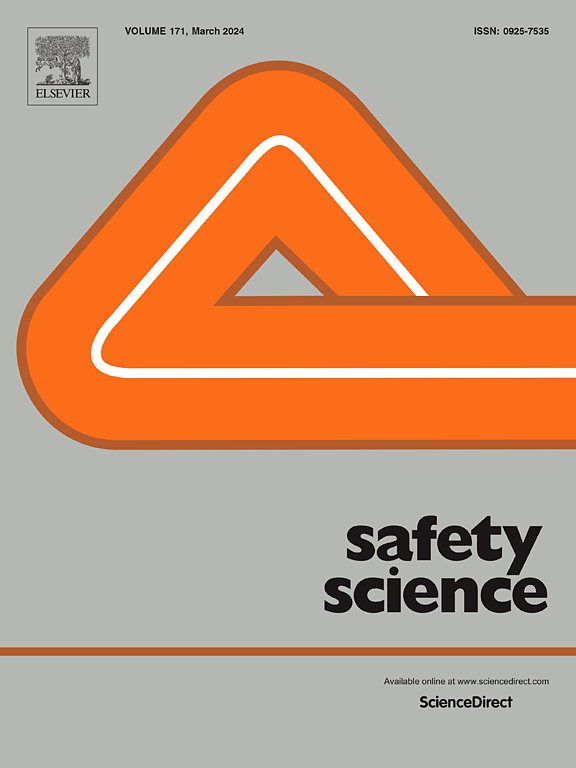Effect of the leakage mass flow rate and ignition time on the explosion characteristics of hydrogen leaked from hydrogen-powered train in tunnel
IF 4.7
1区 工程技术
Q1 ENGINEERING, INDUSTRIAL
引用次数: 0
Abstract
Hydrogen energy is one of the indispensable power sources and rail transit is one of main applications. The safety in tunnel is one of the major concerning issues related to the development of hydrogen powered rail transit, however, most previous studies are focused on open space and pipe scenarios. The effect of ignition time (10, 15 and 20 s) and mass flow rate (0.267, 0.324, 0.375 and 0.426 kg/s) on the inhomogeneous hydrogen distribution, the overpressure and propagation of the pressure wave and temperature distribution are studied numerically. The hydrogen diffusion distance and volume fraction increase with the increase of the leakage mass flow rate and leakage time. The pressure wave propagates to the tunnel exits horizontally and oscillates vertically. The high-temperature region touches and then spreads along the tunnel roof. Then it moves down to the floor and finally fills the entire space. The hydrogen volume fraction increases with the increase of leakage time and mass flow rate. Overpressure and temperature show a decreasing trend when ignition time and mass flow rate increases. Due to increase of hydrogen concentration participating in the chemical reaction, the explosion intensity is inhibited and shows a decreasing trend of explosion overpressure and temperature with increase of ignition time and mass flow rate.
求助全文
约1分钟内获得全文
求助全文
来源期刊

Safety Science
管理科学-工程:工业
CiteScore
13.00
自引率
9.80%
发文量
335
审稿时长
53 days
期刊介绍:
Safety Science is multidisciplinary. Its contributors and its audience range from social scientists to engineers. The journal covers the physics and engineering of safety; its social, policy and organizational aspects; the assessment, management and communication of risks; the effectiveness of control and management techniques for safety; standardization, legislation, inspection, insurance, costing aspects, human behavior and safety and the like. Papers addressing the interfaces between technology, people and organizations are especially welcome.
 求助内容:
求助内容: 应助结果提醒方式:
应助结果提醒方式:


